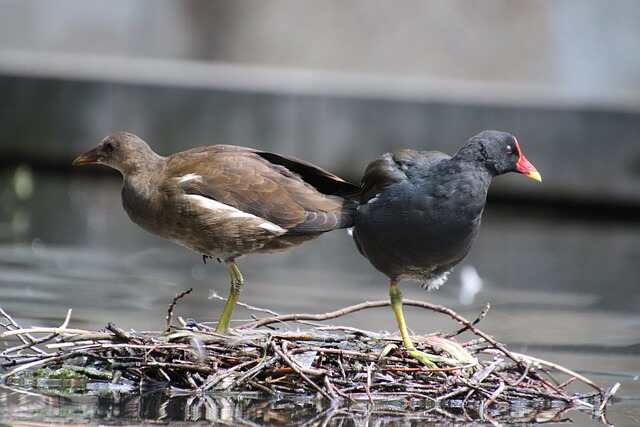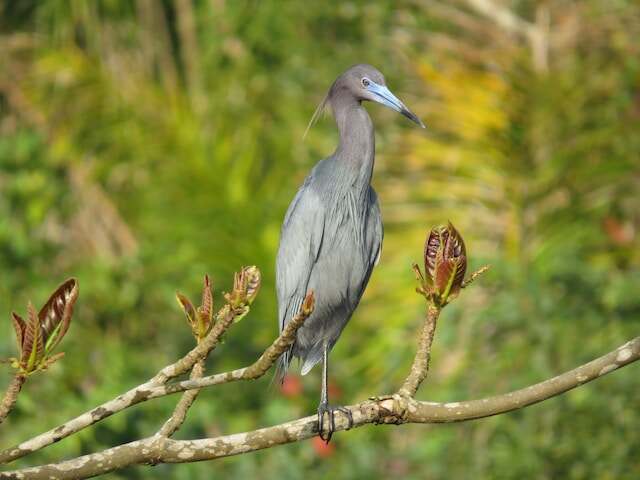Welcome to the fascinating world of avian behavior, where seemingly simple actions often hold profound secrets. In this exploration, we delve into the intriguing phenomenon of why birds stand on one leg. Through this journey, we’ll unravel the mysteries of nature’s balance, gaining insight into the delicate harmony that governs the lives of our feathered friends. Join us as we embark on a quest to decode this captivating aspect of bird behavior.
Table of Contents
- 1 Key Takeaways:
- 2 Why do birds stand on one leg?
- 3 Understanding Avian Anatomy and Adaptations
- 4 The Art of Balancing: Birds One-Legged Stance
- 5 Leg Lifting: A Quirky Behavior in Birds
- 6 Bird Locomotion: More Than Just Standing
- 7 The Science Behind One-Legged Stance
- 8 Biomechanical Advantage of One-Legged Stance
- 9 Unveiling the Evolutionary Origins
- 10 Cultural Significance and Symbolism
- 11 Outliers and Surprising Findings
- 12 Conclusion
- 13 FAQs
- 13.1 How do birds maintain balance while standing on one leg?
- 13.2 Are there any bird species that don’t stand on one leg?
- 13.3 Can birds stand on either leg or do they have a preference?
- 13.4 Do all birds lift their legs when they sleep?
- 13.5 Do birds feel pain or discomfort while standing on one leg for extended periods?
- 13.6 Can birds fly while standing on one leg?
- 13.7 Are there any other animals that stand on one leg?
- 13.8 Can humans stand on one leg like birds?
- 13.9 Is there any symbolic meaning associated with birds standing on one leg?
- 14 Author
Key Takeaways:
- Natural Adaptation: Standing on one leg is a remarkable adaptation that helps birds conserve energy and regulate body temperature.
- Balance and Stability: Despite its apparent simplicity, this behavior showcases the incredible balance and stability possessed by birds.
- Behavioral Insights: Understanding why birds stand on one leg offers valuable insights into their biology and evolutionary adaptations.
- Environmental Factors: Environmental factors such as temperature and predation risk play a crucial role in influencing this behavior.
- Communication and Signaling: In some species, standing on one leg may serve as a form of communication or signaling within social groups.
Why do birds stand on one leg?
Birds stand on one leg for various reasons. One theory suggests that it helps conserve body heat, as birds lose heat through their legs. By lifting one leg, they reduce the surface area exposed to the cold air. Another possible reason is energy conservation, as balancing on one leg requires less effort than using both legs. Additionally, it is believed to be a comfortable resting position for birds.
Understanding Avian Anatomy and Adaptations
It is essential to understand the anatomy of birds to appreciate their unique behavior, particularly standing on one leg. Birds have a lightweight and streamlined body structure that allows them to fly and move efficiently. Their bones are lightweight and hollow, enabling them to reduce their weight further and improve their flight efficiency. Additionally, their respiratory system allows them to receive enough oxygen to support their high metabolism.
Avian legs play a crucial role in their daily lives, serving as their primary mode of locomotion. Birds have four toes, with three pointing forward and one pointing backward – a structural adaptation that enables them to perch and grasp their prey effectively. All leg bones, including the femur, tibia, fibula, and tarsometatarsus, are elongated in birds, with the tarsometatarsus being the most extended bone, forming the main weight-bearing support for the bird.
- Bird Behavior: Birds use their legs for a variety of movements, including walking, running, hopping, and jumping. Additionally, some species use their legs to swim, wade, or catch prey.
- Avian Anatomy: Birds boast a unique leg structure that supports their locomotion and enables them to perch and grasp their prey effectively.
- Bird Adaptations: Birds possess several adaptations that allow them to fly and move efficiently, such as their lightweight and hollow bones and respiratory system.
The anatomy of bird legs has enabled them to perform a variety of movements, including standing on one leg. This behavior is not unique to birds, but it is particularly evident in waterbirds and wading species. Understanding their anatomy is fundamental to explaining their one-legged stance, as we will explore in the following sections.
The Art of Balancing: Birds One-Legged Stance
Have you ever wondered how birds maintain their balance while standing only on one leg? The one-legged stance in birds is a fascinating behavior that has puzzled scientists for years.
What makes this behavior unique is the fact that birds are able to maintain stability on one leg without any external support. This is quite challenging, even for humans!
So how do they do it? The answer is simple – it’s all about balance.
When a bird stands on one leg, its body weight is shifted to the foot that’s touching the ground. This causes the center of mass to shift to one side. To maintain balance, the bird adjusts its body posture and moves its wings and tail to counteract the shift in weight. This way, the bird is able to maintain a stable one-legged stance.
Factors Contributing to One-Legged Stance in Birds
Several factors contribute to a bird’s ability to stand on one leg. One of the primary factors is thermoregulation. Birds are warm-blooded animals, meaning their body temperature needs to be regulated to prevent overheating or hypothermia. By standing on one leg, birds are able to tuck the other leg and foot into their feathers, conserving body heat.
Another factor is energy conservation. Standing on one leg requires less energy than standing on two legs. Birds are always looking for ways to conserve energy, especially during times when food is scarce or when they need to migrate long distances.
Balance is also an essential factor. A bird’s ability to maintain balance on one leg is critical for overall survival. Birds use their one-legged stance when standing on a branch or a rock, or when landing on a perch. Without this behavior, birds would have a difficult time navigating their environment.
The one-legged stance in birds is truly a remarkable behavior. With their unique adaptations and impressive balancing abilities, it’s no wonder why birds continue to captivate us with their one-legged stance.
Leg Lifting: A Quirky Behavior in Birds
One of the most common behaviors observed in birds is leg lifting, where they lift one leg and tuck it under their feathers or stand on one leg. While leg lifting may seem like an insignificant action, it serves a crucial purpose in their daily lives.
Leg lifting is a behavior that is deeply ingrained in birds’ biology and behavior. It is a way for birds to shift their weight, redistribute their body heat, and conserve energy. When birds stand on one leg, the lifted leg reduces heat loss by minimizing the amount of surface area exposed to the environment. By standing on one leg, birds are also able to maintain balance and conserve energy by reducing the amount of muscular effort required to stand.
The reasons for leg lifting, however, may vary among different species of birds. Some birds, like flamingos, stand on one leg to keep warm in cold environments, while others, like storks, lift their legs to protect their feet from hot surfaces. In some species, leg lifting may also serve as a form of communication or a display of dominance.
Leg lifting is not only a practical behavior but also a fascinating one. Observing birds lifting and tucking their legs can provide insights into their daily lives and the ways they adapt to their environments. By understanding this quirky behavior, we can gain a new appreciation for the intricacies of bird behavior and the unique adaptations that enable them to thrive in their environments.
Bird Locomotion: More Than Just Standing
While standing on one leg is a conspicuous behavior among birds, it is only a small part of their diverse locomotion repertoire. The ability to move efficiently is critical to their survival, and they have evolved a range of adaptations to achieve this.
One of the most common modes of bird locomotion is walking, with species ranging from the tiny hummingbird to the towering ostrich displaying this behavior. Running is another widely employed mode of movement, with some birds, such as the secretary bird, capable of sprinting at speeds of up to 50 kph.
Birds also make use of hopping, an energy-efficient method of movement that is used by smaller species, and gliding, employed by larger birds such as eagles and vultures to soar over long distances with minimal effort.
Swimming is another mode of bird locomotion, utilized by aquatic species such as ducks, swans, and penguins. Additionally, some birds employ aerial locomotion, with flight enabling them to travel vast distances through the air.
Interestingly, birds are also capable of complex movements such as dancing, which may serve a variety of purposes such as courtship or territory defense. The diversity of bird locomotion is a testament to the adaptability of these creatures and their ability to thrive in a range of environments.
The Science Behind One-Legged Stance
Scientists have proposed various theories to explain why birds stand on one leg. One prominent theory suggests that birds stand on one leg to conserve energy. By reducing the amount of time they spend balancing on two legs, birds can keep warm in cold temperatures while minimizing heat loss.
Another hypothesis revolves around the idea that standing on one leg allows birds to effectively navigate their environment. By lifting one leg off the ground, birds can access hard-to-reach areas for food and avoid getting entangled in vegetation.
Studies have also shown that birds’ one-legged stance is linked to thermoregulation. Birds can adjust the temperature of their legs to maintain optimal body temperature, and lifting one leg off the ground may help regulate heat flow.
While these theories shed light on the possible explanations for one-legged stance in birds, it’s important to note that there is no one-size-fits-all answer. The reasoning behind this behavior may vary among different bird species and environments.
Biomechanical Advantage of One-Legged Stance
While birds’ one-legged stance may seem like just a quirky behavior, it actually offers several biomechanical advantages. By lifting one leg, birds are able to conserve energy, as standing on both legs requires more effort.
Additionally, birds are able to effectively regulate their body temperature by standing on one leg. By tucking one leg close to their body, birds are able to reduce the exposed surface area, minimizing heat loss in cold weather and reducing heat gain in hot weather.
The one-legged stance also aids in maneuverability. Birds are able to quickly and easily change their position or take off into flight from a one-legged stance. This is especially advantageous for birds that live in environments with many obstacles, such as trees or rocky outcroppings.
Moreover, the one-legged stance allows birds to rest without completely losing their balance. In this position, birds are able to relax their muscles and tendons, reducing fatigue and giving them a moment of respite while still remaining alert to potential predators.
Overall, the one-legged stance is a remarkable adaptation that allows birds to conserve energy, regulate their body temperature, and maintain balance and agility. By understanding the biomechanical advantages of this behavior, we can gain a deeper appreciation for the fascinating adaptations of avian anatomy.
Unveiling the Evolutionary Origins
Understanding the evolutionary origins of birds’ one-legged stance is crucial to comprehending the behavior’s significance. Fossil records and observations of related species have provided insights into the origins and development of this unique adaptation.
Early birds likely stood on both legs, as modern birds’ fossilized remains show. However, several million years later, birds began to exhibit the one-legged stance. Experts believe that this behavior evolved through natural selection and environmental adaptation.
The theory posits that birds’ one-legged stance helps conserve energy by reducing heat loss. By standing on one leg, birds reduce the amount of body surface area exposed to cold air or water. Additionally, this stance allows them to rest one leg at a time while keeping the other leg warm in their feathers.
Another theory suggests that standing on one leg helps birds avoid predators. By reducing their profile, birds make it harder for predators to spot them in the grass or water.
It is essential to note that the exact evolutionary history of birds’ one-legged stance is still a topic of discussion among experts. Further research is needed to confirm the hypotheses and provide more substantial evidence.
Cultural Significance and Symbolism
As one of the most intriguing bird behaviors, standing on one leg has captivated human cultures worldwide, often becoming symbols of grace, balance, and resilience. In many native American cultures, the crane is revered as a symbol of good fortune and longevity due to their striking one-legged stance.
Similarly, in ancient Egyptian art, the one-legged stance of certain species of birds such as the ibis and heron were depicted as emblems of the god Thoth, who was associated with knowledge and wisdom.
In Chinese culture, the crane’s one-legged stance is considered a symbol of immortality, and the legend that cranes stand on one leg while sleeping to keep one eye open for predators has come to represent vigilance and caution.
The cultural significance of this behavior is not just limited to ancient times. Even modern societies view one-legged stance as a representation of balance and poise. In contemporary dance, the pose is a popular stance that dancers use to showcase the fluidity and control of their movements.
Overall, the one-legged stance of birds has left an indelible mark on human culture, inspiring art and mythology across different civilizations. Their ability to balance on one leg has become a symbol of grace, wisdom, and resilience, speaking to the incredible adaptability and uniqueness of bird behavior and adaptations.
Outliers and Surprising Findings
While most birds stand on one leg, there are exceptions to this rule. Some species, such as the flamingo, are well-known for their one-legged stance, while others, like the crane, have been observed standing on two legs. Researchers have also discovered anomalies in avian anatomy, including species with longer legs on one side of their body or with highly flexible ankles that allow for effortless balance.
One fascinating study found that some birds, like the black-tailed godwit, can sleep while standing on one leg without losing their balance. Additionally, some birds have been observed performing activities, such as hunting or preening, while maintaining their one-legged stance, showcasing their impressive balancing abilities.
These outliers and surprising findings highlight the complexity and diversity of bird behavior and anatomy. By studying these exceptions, researchers can gain a better understanding of the mechanisms behind birds’ one-legged stance and the adaptations that allow them to thrive in various environments.
Conclusion
Throughout this article, we have explored the fascinating behavior of birds standing on one leg. By delving into their unique adaptations and examining the scientific explanations behind this behavior, we have uncovered the hidden stories behind their one-legged stance.
We now understand that birds’ ability to balance on one leg is a result of their intricate anatomy and biomechanical advantages. Not only does this behavior conserve energy, aid in thermoregulation, and allow for effective navigation, but it also serves as a means of communicating with others and performing various tasks.
Through scientific research and observations, we have gained insights into the evolutionary history of this behavior and the cultural significance and symbolism associated with it. While most birds stand on one leg, there are exceptions to this rule and intriguing anomalies observed in avian anatomy.
These outliers and surprising findings push us to continue our fascination and research into this captivating avian behavior. In conclusion, the behavior of birds standing on one leg holds a plethora of secrets waiting to be uncovered.
By examining their anatomy, understanding their adaptations, and delving into scientific explanations, we can begin to unravel the mystery behind this fascinating avian behavior.
FAQs
How do birds maintain balance while standing on one leg?
Birds have remarkable balance capabilities. Their bodies are naturally adapted for maintaining stability, with specialized anatomy and muscular control. The positioning of their legs, combined with their muscles and tendons, allows them to maintain balance with minimal effort. Furthermore, birds have a system called “passive stabilization” that enables them to maintain balance even when their muscles are relaxed.
Are there any bird species that don’t stand on one leg?
While most bird species exhibit the behavior of standing on one leg, there are exceptions. Some species, such as pigeons and doves, tend to sit on both legs rather than adopt the one-legged stance. Additionally, birds that live in colder climates may not stand on one leg as frequently, as they may need to keep both legs on the ground to conserve heat.
Can birds stand on either leg or do they have a preference?
Birds can typically stand on either leg, and they may alternate between legs depending on various factors. However, research suggests that birds do have a preferred leg for standing. This preference could be influenced by factors such as muscular strength and comfort. Observations have shown that some birds consistently choose a particular leg for standing, indicating a preference.
Do all birds lift their legs when they sleep?
While lifting one leg during sleep is a common behavior observed in many bird species, it is not universal. Some birds do continue to stand on both legs even when they are sleeping. Sleeping behavior can vary depending on the species and their individual habits.
Do birds feel pain or discomfort while standing on one leg for extended periods?
Birds are well-adapted to maintaining balance on one leg and have evolved to minimize any discomfort or pain associated with this behavior. They have specialized structures in their legs and feet that help distribute weight evenly and reduce strain. Standing on one leg is a natural resting position for birds and is not typically associated with pain or discomfort.
Can birds fly while standing on one leg?
Birds cannot fly while standing on one leg. They need to use both legs for takeoff and flight. The one-legged stance is primarily observed when birds are resting, sleeping, or engaging in activities that require minimal movement, such as preening or observing their surroundings.
Are there any other animals that stand on one leg?
While birds are most commonly associated with standing on one leg, there are other animals that exhibit similar behavior. Flamingos, for instance, are well-known for their one-legged stance. Some other bird species, such as storks and herons, also adopt this posture. In the animal kingdom, certain mammals like kangaroos and horses can stand on one leg as well.
Can humans stand on one leg like birds?
Humans can certainly stand on one leg, but it requires more effort and balance compared to birds. While birds have specialized adaptations for this behavior, humans rely more on their muscular strength and coordination. Standing on one leg for extended periods may cause fatigue or strain in humans, whereas birds can maintain this posture effortlessly.
Is there any symbolic meaning associated with birds standing on one leg?
Birds standing on one leg have often been associated with symbolism, representing balance, grace, and stability. In various cultures, this behavior is seen as a metaphor for finding equilibrium in life. It can also symbolize adaptability and the ability to navigate challenges with resilience.







